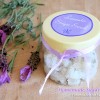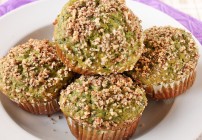Yes, hitting the gym is great, but it’s what you do after working out that seals the deal. This is where the magic of real transformation occurs! Your recovery keeps muscles happy—be it running, lifting, or HIIT—and lets your energy levels stay high. Now, let’s dive into five key recovery routines that help fitness enthusiasts bounce back stronger and faster after tough workout sessions.
Source: https://www.pexels.com/photo/person-wearing-black-shoes-near-a-roller-on-green-grass-4378850/
Keeping Hydrated and Fueling Your Body
Hydrate
When you sweat, you are not only losing water; you’re also losing some important electrolytes that are helping your muscles work. Sure, that glass of water will do, but if you want to make a real difference in your body’s recovery, you’ll need to do something more. Electrolyte drinks, or just a glass of plain coconut water.
Food for Muscle Repair
We have been hearing this time and again: protein is key to muscle recovery. And true it is. Immediately after your workout, muscles are in a very pleading phase to take up all the protein to rebuild stronger. But don’t be mistaken—carbs won’t go out of style. They refuel your stores of glycogen, basically replenishing energy supplies. Think of a post-workout meal as a sort of reset button—chicken and rice, a smoothie made with plant-based protein, or even a bowl of quinoa. Eating soon after working out gives your body the green light to rev up for recovery.
Supplements
Sometimes we need a little extra help other than just food. The supplements, such as BCAAs or omega-3s, act to reduce muscle soreness and inflammation so that you can get a quicker bounce back. Omega-3s with fish oil can actually help with swelling, making them perfect for post-workout recovery.
Active Recovery and How to Keep Your Muscles Active
Light Cardio
After a workout, try doing light jogs or effortless bike rides to help flush out lactic acid, which builds up in the muscles during exercise and reduces soreness.
Stretching and Yoga
Active recovery is not all about movement; it’s about smart movement. One can incorporate dynamic stretching or a bit of yoga to help loosen up tight spots. What really makes yoga great, though, is it not only stretches your muscles but helps you focus on your breathing to help with being mentally recovered. Try just taking 10 minutes in a few easy poses after your workout, and your body will thank you.
Deep Tissue Relief
Foam rolling is almost like giving your muscles a mini-massage. Point your quads or calves and slowly roll over any tight spots. You’ll notice some spots feel highly sensitive—just meaning they need a little extra TLC. In a few minutes, you will feel the tension ease up.
Cold Therapy for Muscle Recovery
Ice Baths
The term ‘ice bath’ can be harsh, but it is really truly wonderful for your muscle recovery. This is because the cold makes the blood vessels shrink, which helps reduce swelling and therefore muscle soreness. If you’ve just pushed yourself hard, going into an ice bath can really help for around 10-15 minutes after a workout. It’s one of the oldest tricks in the book, but it’s still around for a reason—it works! That first shock is well worth the long-term benefits.
Cryotherapy
If you are anything less than thrilled to dunk yourself into cold water, there’s the option of doing cryotherapy in a far more luxurious manner. Just imagine stepping into a super-chilled chamber for only a couple of minutes and reaping all of those same benefits from taking the ice bath. Cryotherapy is faster, and some would even say it’s painless. Plus, it’s very hip! Most high-end fitness enthusiasts swear by it because of its quick method of reducing muscle inflammation.
Cold Showers
Another thing you ought to know is that you really don’t have to use a full-blown ice bath or a cryotherapy session each and every day. A cold shower after your workout can still have amazing benefits. The cool water serves to constrict your muscles, which helps in reducing inflammation and soreness. It is the easiest way to bring in some cold therapy into your life without having any high-tech gadgetry. If one is looking for something more specialized, then the myomaster ice bath is really a great choice for a high-end portable solution when trying to help with muscle recovery.
Rest & Sleep
Sleep Like It’s Your Job
If you are serious about fitness, then sleep is something that should be taken seriously. This is where the magic happens, and most of your recovery takes place. Your body repairs muscles, restores energy, and it can even release growth hormones during deep sleep. That’s why you need those solid hours every night to help you recover faster.
Power Naps
Did you know that power naps can actually save you? Even just 20-30 minutes of sleep in the middle of the day can help your muscles relax and your brain reset. Power naps don’t just have the name they actually give you a power boost. And especially after a hard workout, a nap can be the best
Rest Days
Overtraining is real, and it will leave you sore and tired all the time. That’s why it’s so important to schedule regular rest days in. On your rest days, your muscles get a chance to fully recover, which means they’ll come back stronger. And it’s tempting to keep pushing, but taking a day off is sometimes the best way to actually guarantee you can keep going in the long run.
Conclusion
Recovery can seem far less important than the actual workout, but it is in this time that true strength is built, pre-injuries are prevented, and long-term success is sparked. In reality, all progress your body needs is made in recovery. It is in those moments of rest, rehydration, and gentle movements that your muscles rebuild, energy is restored, and you are ready to come back stronger for that next workout. Take it seriously, because the magic happens here!
Related Posts
- 5 Workout Apps To Improve Your Home Fitness Regime
Creating the perfect workout regime takes a little experimentation. Many of us now prefer to…
- Health & Fitness
Food FactsDiet & Nutrition Mind & Body Exercise & Fitness
- TGIF Promotional Post
Attention Chicago area Friday's® fans! Head on over to your local Friday's® now to pick…


















